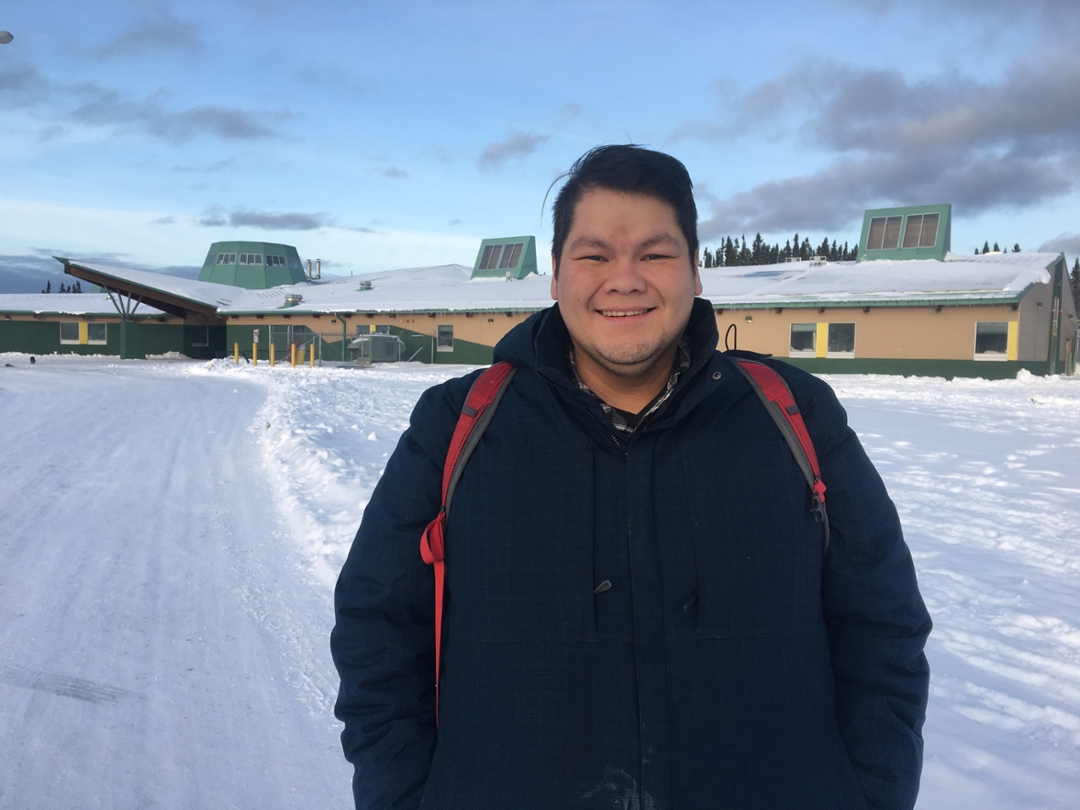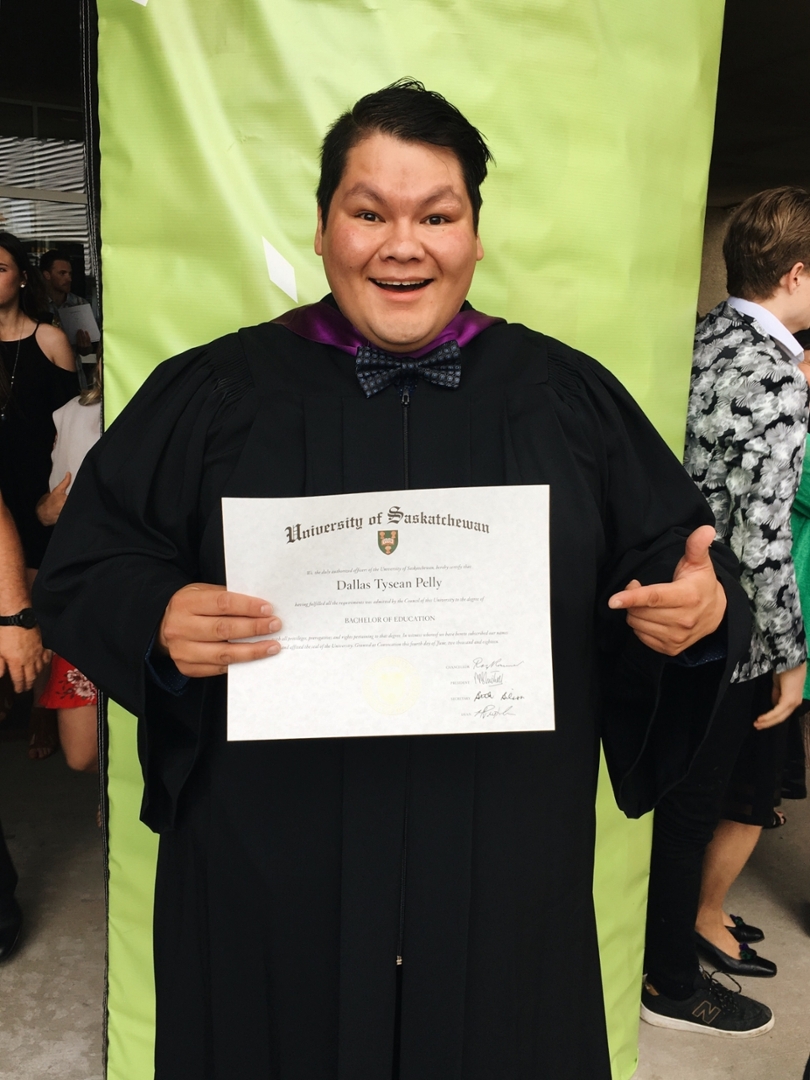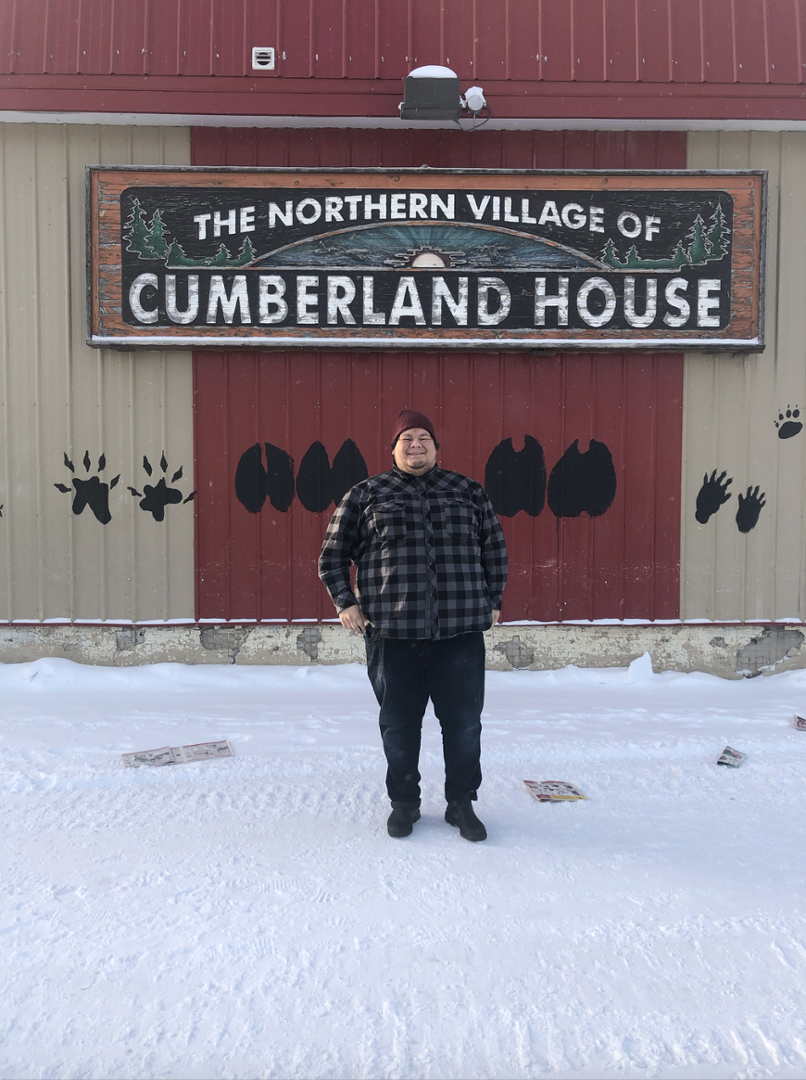
A reach to teach
Indigenous educator uses IT to get into remote classrooms
By Naomi ZurevinskiThe very day after Dallas Pelly (BEd’18) finished his internship through the College of Education at the University of Saskatchewan, he started what he calls “his dream job,” working as an Indigenous educator for Connected North.
“In university, I had taken a few educational technology and design courses on how to create e-learning courses, and I thought I might use those courses, but I didn’t know what that would look like in the workforce until I found this job,” Pelly said. “I know technology and I enjoy the teaching, so it sounded like a dream job for me.”
Connected North is a program managed by Canadian non-profit TakingITGlobal and founded by technology provider Cisco, that works to foster student engagement and deliver enhanced education opportunities in remote Indigenous communities.
Using two-way TelePresence video technology, students are able to have learning experiences they might not otherwise have access to. There are nearly 70 schools in Canada that Connected North works with, with four in Saskatchewan.
Pelly is originally from Cote First Nation, but grew up in Saskatoon. While on campus he was involved in many initiatives and leadership opportunities, including the Indian Teacher Education Program (ITEP), where he also served as ITEP student body president for a year.

“The ITEP program is designed to meet the needs of Indigenous learners and communities,” he said. “I think it equipped me to understand the challenges that Indigenous communities are already facing and how programs can supplement and boost literacy gaps and educational challenges that exist in Indigenous communities.”
Pelly says when addressing educational challenges, there is no one-size-fits-all model.
“We partner with communities to help supplement what’s already happening in the classroom through videoconferencing,” he said. “When we’re working with the teachers, we ask them, ‘What are the things that your school or community is interested in? What are the priorities of this community?’ It’s all catered to the specific needs of that community.”
With this in mind, the program serves to support the work that is already happening in the schools by providing sessions that are engaging and informative. Examples include a virtual field trip to the Royal Tyrrell Museum in Drumheller, Alta., and having Indigenous role models and entrepreneurs share their experiences on everything from their careers, to what it’s like moving to a city for university.
“Unless you imagine or see someone in a certain field, you might not be interested in that because you don’t think it’s possible,” Pelly said. “So, with this it’s like, ‘Hey here’s somebody who’s taking engineering, and they’re Indigenous and they’re from a northern community.’ It’s being able to give the students that experience and show them that it’s possible.”
Pelly says having these resources and experiences is crucial. In university, two resources that stood out to him were the Aboriginal Students’ Centre, and the Gordon Oakes Red Bear Student Centre, which is something he remembers fondly.
“Having the new building meant so much to me and helped me find my place on campus. It’s a centering place for ceremony and for me that was really grounding to have in my last year. It’s a place that was built with purpose in this era of reconciliation, showing that we can move forward in a good way,” he said. “That kind of helped me carry on in my work, knowing that the value of reconciliation is so important, not just in the educational community, but also in the broader university context. We’re constantly coming back to that as a learning institution and I think that’s a point of pride for me, to look back and say that we’re leading in that way. We still have a long way to go, but we’re continuing that conversation.”
Pelly is excited to be continuing that conversation with the work he’s doing now. On a day-to-day basis, he works out of Saskatoon, but he’s also had the opportunity to visit some of the communities he supports, which has been a major highlight for him.

“I always thought it would be amazing to visit Saskatchewan’s north and through my job, I’ve been invited to Black Lake and Wollaston Lake now a handful of times,” he said. “Now when I go, I know the teachers and I know the community. One time at Wollaston Lake I even ended up calling their community bingo.
“For me, it’s integrating into the community and forming friendships that I can rely on, which help me understand this whole other aspect of Saskatchewan that I wasn’t aware of before.”
A second highlight for Pelly was travelling to Cambridge Bay, a community in Nunavut. Nearly half of the schools in the Connected North program are located in Nunavut, and Pelly says it was an “amazing experience.”
Overall, Pelly says what inspires him most is the students he gets to work with, whether it’s meeting them in person, or interacting with them during a videoconference.
“For a small window of 20 or 30 minutes when we have these sessions, the students and I are immersed in life together and they’re always happy to see us, so that motivates me,” he said. “Thinking about the experiences that I’ve had as a student and as a university graduate, I hope to somehow pass on that knowledge and tradition to other people.”
Moving forward, he hopes to bring more opportunities to students through technology, noting the options are endless.
“Maybe we can live-stream the USask powwow or the round dance so that students can see it. Or maybe it’s having Elders speak on the protocol of how to do a round dance,” he said. “I just feel there’s so much here, in the heart of Treaty 6 Territory, and there’s no better time to integrate this interactive learning. I’m always on the hunt for new content providers and partnerships.”
Overall, Pelly says he’s passionate about his work, and for him, that’s a dream come true.
“I feel like I’m just a kid from the rez who decided to go for it, and here I am, living my dream job — a job with purpose — and being able to share that with as many people as possible. It’s very hard work, but it’s passionate work and it’s work that I love to do, and am excited to do each and every day.”


